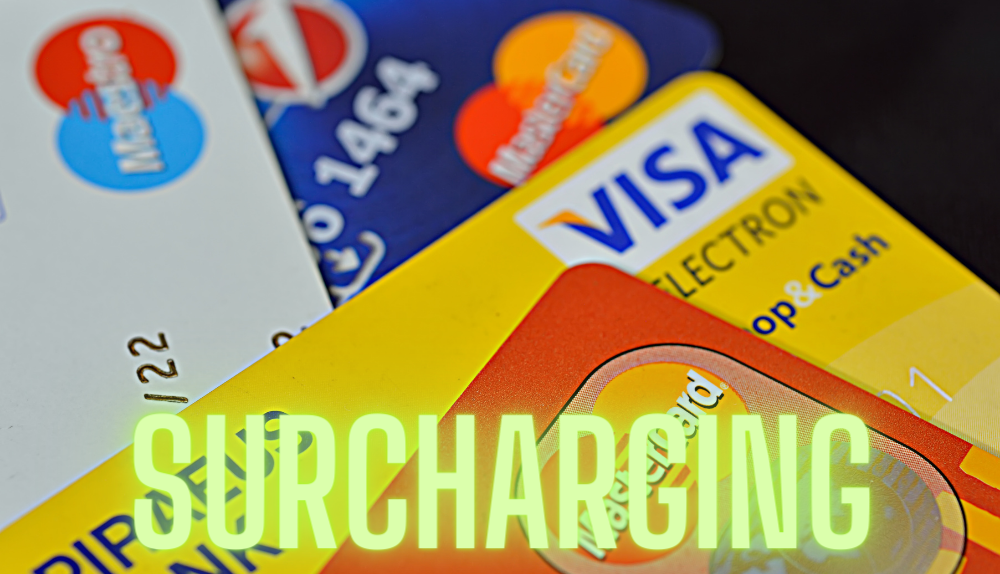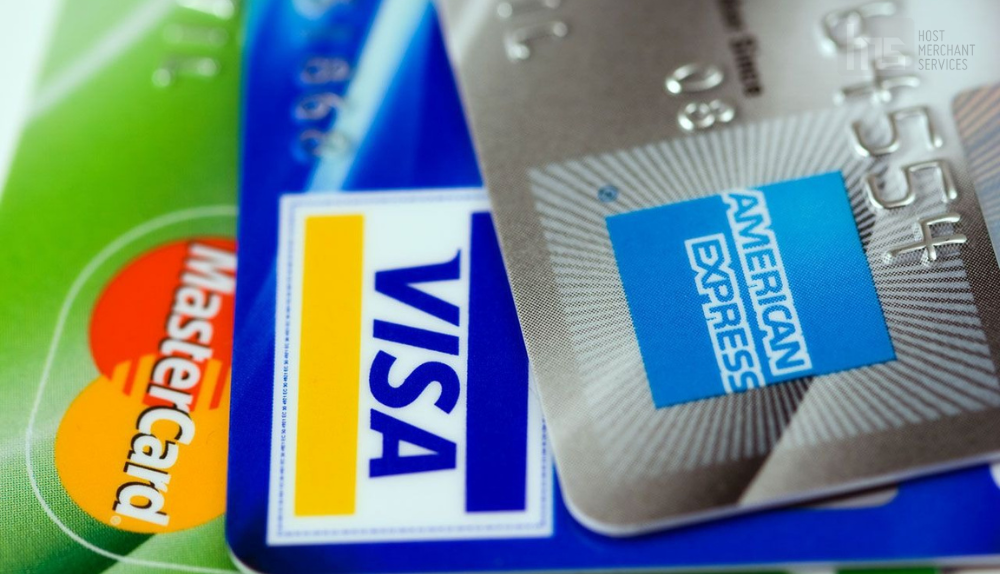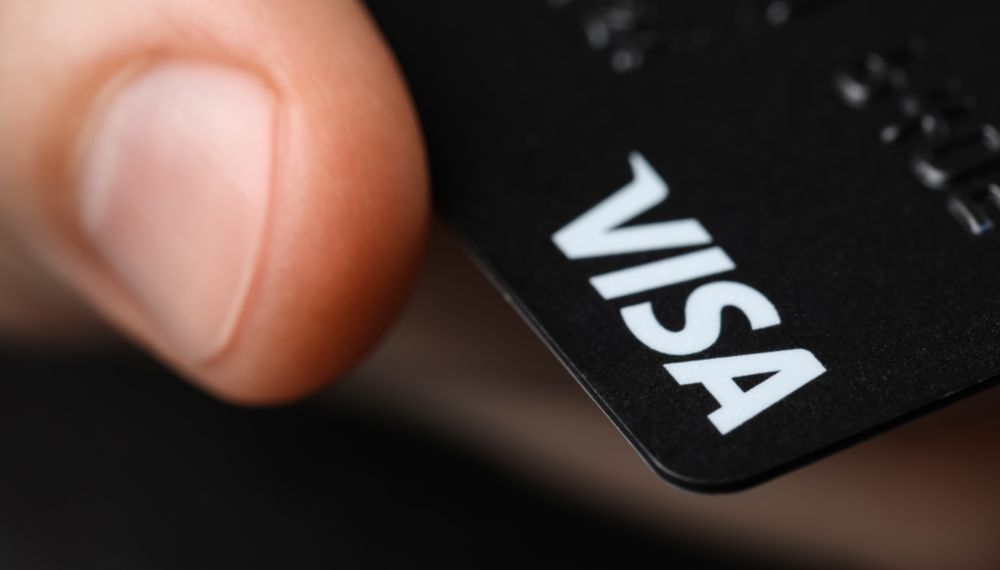How Visa Surcharge Rules Changed in April 2023
Visa has recently implemented a set of modifications to its surcharge policies to ensure fairness in payment processing. Whether you are a merchant or involved in the payment processing industry, these new Visa surcharge rules and regulations are important to understand for easy integration into your business and to avoid hefty fines associated if violated.
Before merchants could levy a surcharge fee up to 4% in order to offset the expenses associated with credit card processing. This blog post will provide an overview of all the changes made by Visa to its surcharge regulations that you need to follow in your business.
Furthermore, we will discuss how these alterations impact merchants and outline the consequences if one does not comply with these regulations.
Understanding Credit Card Surcharges

A credit card surcharge refers to a fee that businesses or merchants add to the purchase price when customers choose to pay with a credit card. Typically this additional charge represents a percentage of the amount spent ranging from 1% to 4%.
The practice of implementing surcharges, for customers became more common in 2013 when businesses and merchants collectively took action against Visa and Mastercard. This actions was a result of This action was taken due to the costs associated with accepting credit card payments.
As a result of the lawsuits resolution merchants gained the ability to pass on the fees they had previously absorbed from credit card companies and payment processors to their customers.
After this merchants were allowed to charge an “additional cost” namely surcharge fees which could be anywhere from 1.5% to 4% on each transaction. The main thing to focus on here is that there was a limit of up to 4%, meaning a merchant can’t charge the customers more than this limit.
Recently Visa has made a change by lowering the surcharge cap from 4% to 3%. This implies that merchants might not be able to pass on the cost of payment processing more than this threshold.
To put it simply if the processing fees, for a Visa card exceed 3% merchants can only add a surcharge of 3%. They have to cover the remaining expenses themselves.
The Recent Visa Surcharge Rules Changes

Visa has recently made some updates to its rules regarding surcharges, on credit cards. These changes will go into effect on April 15, 2023. There are two modifications that merchants need to know about.
The first change involves the registration process for merchants who want to implement surcharges. Previously Visa required registration for this purpose. However, under the new rule merchants are no longer required to register. Instead, they must simply inform their merchant acquirer 30 days in advance before starting any practices.
The second significant adjustment is a reduction in the surcharge rate allowed in the United States. It used to be set at 4%. Now it will be lowered to 3%. Merchants who currently have a 4% surcharge must make sure they decrease it to meet the mandated 3% by or before April 15, 2023.
Apart from these changes, there are a couple of points worth noting;
- The maximum surcharge fee for Canada has also been lowered to 2.4%.
- Merchants must indicate the surcharge amount, in Field 28. Visa now considers this field as the notification of the applied surcharge.
How the 2023 Visa Surcharge Rule Changes Impact Merchants?

The fees associated with payment processing introduce another level of complexity to this issue. For individuals who are not familiar, with the workings of credit card processing, a small difference of 1% may not appear significant.
However, it is essential to understand that this single percentage point can result in losses. Merchants and service professionals potentially reach into the billions.
In addition to Visa’s interchange rate, merchants also contend with the IC+ rate imposed by their payment processors. Visa’s interchange rate can fluctuate while the IC+ rate can vary widely, reaching as high as determined by the financial company, depending on a business’s risk assessment.
Suppose a merchant manages to secure the lowest interchange fee, a modest 1.5%, coupled with the lowest IC+ fee of 0.5%.
This sums up to a 2% charge per transaction in fees. In such a scenario, a 3% surcharge fee appears more than adequate to recover the losses incurred due to credit card processing fees.
However, it’s essential to understand that there are other costs as well which are—transaction, authorization, and assessment fees, among others. Moreover, attaining the lowest processing rate proves to be a challenging feat for many merchants.
Even if they do attain it, everyday business operations, like handling international payments, processing high-value transactions, and grappling with chargebacks, can hike up their processing fees, eroding their profit margins.
It’s not hard to comprehend why financially strained businesses diligently seek ways to recoup their processing fees, with one of the most effective strategies being the introduction of surcharges on credit card payments.
How Merchants Can Ensure Compliance with Visa’s Updated Surcharge Rules
It is crucial for merchants to ensure they align with Visa’s revised surcharge regulations by updating their point of sale information. This update involves clearly disclosing a 3% credit card surcharge rate.
Failure to make this necessary adjustment can result in serious consequences, including fines that amount to as much as $25,000 per month. Continued non-compliance may even escalate these penalties to over $100,000 and could potentially lead to the termination of your account.
After familiarizing yourself with the regulations surrounding credit card surcharges, there are certain steps you must take. Notify your merchant acquirer and the applicable card networks of your intention to implement a surcharge.
It is also essential to ensure that your payment gateway or processing equipment is reprogrammed correctly to adhere to the guidelines established by the card networks when monitoring and documenting these additional fees.
To guarantee compliance merchants are strongly advised to seek guidance from their merchant services provider before making any changes. These providers can offer assistance by providing signage and guidance tailored specifically for conforming with the surcharge regulations associated.
Credit Card Surcharge Regulations Across States
It’s important to understand that surcharging may not be allowed in all states or countries and there might be restrictions, on when and how it can be applied. As of 2023 only Puerto Rico, Connecticut, and Massachusetts still have regulations prohibiting credit card surcharges.
However, it’s worth noting that some states currently have court rulings against surcharges that have made them unenforceable for the foreseeable future. These states include;
- California
- Florida
- Kansas
- Maine
- New York
- Oklahoma
- Texas
- Utah
What are the Noncompliance Charges?
Noncompliance with Visa’s merchant surcharge rules falls under the jurisdiction of Visa’s Visa Core Rules and Visa Product and Service Rules. These regulations institute a system of fines that escalate and compound for noncompliance. Below is a table outlining Visa’s fines for noncompliance.
| Violation Type | Fine Amount |
| Initial Notification | A charge of $1,000 and an application for a corrective action plan |
| If the response date has lapsed or The compliance deadline for the agreed-upon remediation plan has not been met. | $25,000 |
| If the response is not received within 30 calendar days or the violation continues. | $50,000 |
| If the response is not received within 60 calendar days or the violation continues. | $75,000 |
| If the response is not received within 90 calendar days or the violation continues. | $100,000 |
| If the response is not received within 120 calendar days or the violation continues. | $125,000 |
| If the response is not received within 150 calendar days or the violation continues. | $150,000 |
| If the response is not received within or after 180 calendar days or the violation continues. | The penalty from the prior month rises by $25,000 every month till the infraction is resolved. |
What are some Alternatives to Visa Surcharge?
Merchants may explore different approaches to face the complexities of complying with new Visa regulations to surcharge requirements. Merchants can offer a cash discount program, where customers are offered discounts for paying in cash. Although similar to surcharging it has some differences.
Surcharging involves adding fees for payment methods whereas cash discounting involves reducing prices for alternative payment methods. It’s worth noting that cash discounting is legally permissible in all states, including Mississippi and Connecticut that still prohibit surcharges.
Another viable option for merchants those whose customers primarily use credit cards is adjusting their pricing strategy. They have the choice to either increase prices or apply an additional fee to all purchases regardless of the payment method.
This approach allows merchants to offset the expenses associated with credit card processing fees. By adopting such a strategy merchants can avoid challenges related to restrictions on surcharges.
Conclusion
The recent modifications, to Visas surcharge regulations in April 2023 have implications for both merchants and consumers. These adjustments aim to promote fairness in payment processing by reducing the surcharge rate from 4% to 3% in the United States.
Although this may seem like a change it can have financial consequences, for businesses as they navigate the complexities of credit card processing fees.
To comply with the rules merchants now need to make sure they adjust their point of sale disclosures and inform their merchant acquirers ahead of implementing surcharges. Failing to do so could result in fines and even account termination.
As these changes come into effect it is crucial for merchants to adapt their strategies and ensure they can continue thriving in the world of commerce.
Frequently Asked Questions
Q; What exactly is a payment card surcharge?
It’s basically an extra charge that a store or business might tack onto your bill when you use a card to pay. This fee is also sometimes called a checkout fee.
Q; When will the new Visa surcharge rules take effect?
To avoid any penalties all businesses must have these updates implemented on April 1, 2023, and the official enforcement of the rules began on April 15, 2023.
Q; Do I need to inform my customers about the surcharge?
Definitely. U.S. merchants applying a surcharge it is important to display the surcharge amount on every receipt. Additionally make sure to have signs, at both the entrance and checkout counter notifying customers that a surcharge is applied to credit card transactions.
Q; Are there any limitations on how much I can charge as a surcharge?
U.S. Merchants have the option to apply a surcharge to credit card transactions; however, it should not exceed the merchant discount rate, for that credit card.











